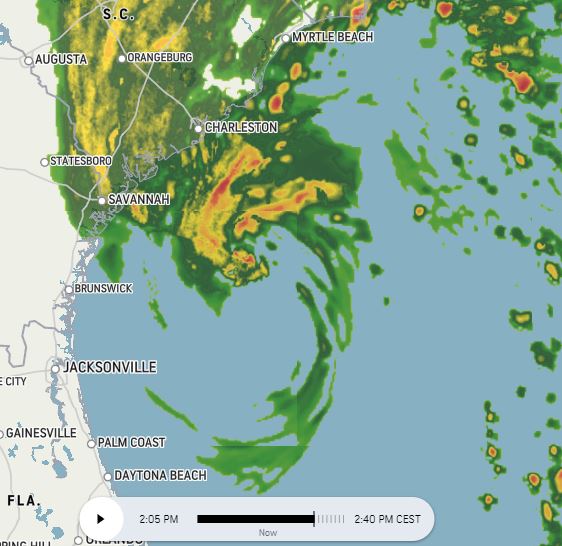
#HurricaneIAN is very large, very wet and headed inland. The possibility of strengthening once if it finds itself back over open water is non-zero. It is already being fueled by water/convection from the Atlantic side of Florida. 

The eye is 60kms wide at present and it is very slow moving - which is bad news from a landfall winds and flooding perspective. Storm surge impacts and flooding impacts are already extreme.
The capacity of giant storms to maintain strength over land is considerable (#INFA 2021).
The capacity of giant storms to maintain strength over land is considerable (#INFA 2021).

Georgia, South Carolina and North Carolina and Eastern Maryland are all squarely inside the severe flooding window.
And forecast rainfall of 10-20 inches over much of Nth Florida is potentially catastrophic (latest NHC warning).
And forecast rainfall of 10-20 inches over much of Nth Florida is potentially catastrophic (latest NHC warning).

.... earlier thread
https://twitter.com/althecat/status/1574698136324415488?s=20&t=qNMgLTgCJGAFzRH8afWEkg
• • •
Missing some Tweet in this thread? You can try to
force a refresh



























